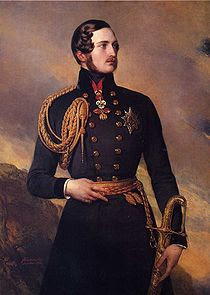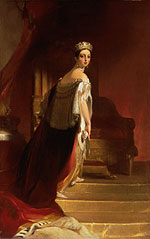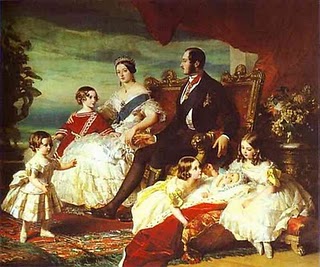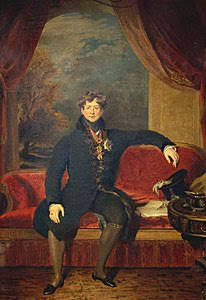Princess Charlotte Augusta of Wales lived a short and largely unhappy life. But she was always popular with the people and the outpouring of public grief following her sad demise was immense. Some have compared it to an early 19th century version of the widespread mourning over the death of Diana, Princess of Wales, in 1997.
Above, Princess Charlotte by artist George Davis, c. 1817, in the royal collection.
Last year on this date, we posted an extensive story about Princess Charlotte — click here to read the whole story.
While researching my recent talk “The Sensible Regency Wedding” for the 2011 JASNA AGM in Ft. Worth, I found the account Princess Charlotte wrote to her friend Margaret Mercer Elphinstone about reading Sense & Sensibility, Jane Austen’s first published novel, which came out on October 31, 1811.
In her letter of January 22, 1812, the Princess wrote: ” ‘Sence and Sencibility’ I have just finished reading; it certainly is interesting, & you feel quite one of the company. I think Maryanne & me are very like in disposition, that certainly I am not so good, the same imprudence, &c, however remain very like. I must say it interested me much.”
Mercer, as Charlotte called her, was herself an heiress and well-connected in London society. Her father was Admiral Lord Keith of the British Navy. The correspondence between Princess Charlotte and Meg Mercer lasted from 1811 until just before Charlotte’s death in 1817. Although requested to return the letters to the Prince Regent, Mercer kept them in her possession. Through her daughter, who became the Marchioness of Lansdowne, the letters were held at Bowood House in Wiltshire. They were published in 1949, in a volume edited by Professor Arthur Aspinall (1901-72).
The letters reveal a lively mind, if somewhat flighty, and a great interest in affairs of government on Charlotte’s part. The last 18 months of her life, after her marriage to Leopold of Saxe Coburg in 1816, were generally happy, we are pleased to say. RIP, Charlotte.





























